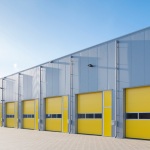Why are more investors choosing commercial properties over residential?
It’s a trend we’ve been seeing for a few years now. Often it’s SMSFs buying commercial properties, but also individuals. And of course, people choosing to buy rather than rent a property for their own business.
Commercial property has always been popular, partly because tenants often pay the outgoings, and leases can be longer and secured. But it was the changes made to depreciation in 2017 that really increased investor interest in commercial properties.
Depreciation on commercial property was also introduced prior to that on residential, so in some cases there is depreciation on commercial property that was built way back in 1982.
You’ll recall that the 2017 changes affected the treatment of Assets (Plant and Equipment) in second-hand residential properties, but not commercial. So commercial properties can yield more depreciation.
We put together Depreciation Schedules on lots of commercial properties – everything from small shops to big farms. There is an advantage for an accountant having a Depreciation Schedule provider that does residential AND commercial properties.
Especially a provider that only does tax work and has been doing it for over 20 years, like Depreciator.
Key points for commercial property depreciation
- Assets (Plant and Equipment) can be depreciated in second-hand commercial properties.
- The building Write-off on manufacturing properties is 4%.
- The Capital Works part of a fitout must be claimed at 2.5%
- Instant Asset Write-Off (or Temporary Full Expensing) applies to second-hand Assets in commercial properties.
- Farms often have lots of unclaimed depreciation.
Which commercial buildings can be claimed at 4%?
Manufacturing properties.
A lot of people don’t know this – even, sadly, some people who prepare Depreciation Schedules.
Claiming Capital Works at 4% vs 2.5% is a bonus for clients who own commercial property.
So what sort of commercial property is classed as a ‘manufacturing property’?
Manufacturing is a broad term but has a narrower meaning in the relevant legislation. To be classed as a manufacturing facility, materials must be changed into a finished product. In a property where this happens, there would be more wear and tear on the building, which explains the 4% boost.
A good example would be a building used to manufacture kitchens. Sheet materials and hardware enter the property and are then cut to size, laminated or veneered where needed, and assembled into cabinets and benchtops.
So there are machines and forklifts and trucks all involved in breaking down material and then creating a finished product from it.
Simply bringing together and assembling pre-manufactured components is not manufacturing, eg. your local computer shop building a desktop PC from already manufactured components, is not in the business of manufacturing. Warehouses similarly are not properties used for manufacturing.
Manufacturing properties can also cost more to build, which can increase the Capital Works claim.
How are commercial fitouts treated?
Sometimes clients don’t own the building but will spend money doing a commercial fitout. We do many of these jobs. These fitouts nearly always consist of Capital Works and Assets. Depreciation for the former is claimed slowly, and the latter more quickly.
We occasionally have clients and accountants who tell us that they only have, say, a 6-year lease and want to claim the Capital Works over those 6 years. Um, can we please?
While there is perhaps a logic to that notion, it’s not a logic that finds favour with the ATO. So the Captial Works, typically fixed Gyprock walls and glass partitions, are written off at 2.5%.
But, if after 6 years (or before) that tenant vacates the premises and demolishes the fitout as part of their ‘make good’ provision, they get to claim the residual value of the Capital Works disposed of.
How are used Assets in commercial properties treated?
Unlike residential properties, used Assets in commercial properties can be depreciated. And in many commercial properties, there can be substantial value in these.
In terms of used Assets, large offices can have acres of carpet and substantial air conditioning plants. Manufacturing properties can have traveling cranes, lifts, and ventilation equipment.
It is not unusual for us to find tens of thousands of dollars in second-hand Assets in a recently acquired commercial property. And the new owner of that property can depreciate those Assets. We just need to assign a second-hand value to them.
Renovations done by previous owners can also be depreciated. Again, we just need to work out the cost of these works when they were done.
Many people, again sometimes including those who do Depreciation Schedules, are not aware that the Instant Asset Write-Off or Temporary Full Expensing can be applied to second-hand Assets and they can in most cases be written off immediately.
|
Instant asset write-off thresholds since 2020 |
|
|---|---|
|
Purchase Date |
Threshold per asset |
|
12/03/2020 to 30/06/2021 |
$150,000 |
|
03/04/2019 to 30/06/2020 |
$30,000 |
|
Temporary Full Expensing |
|
|---|---|
|
Purchase Date |
Threshold per asset |
|
06/10/2020 to 30/06/2023 |
Unlimited |
We all know the threshold for the Instant Asset Write-Off has moved around a lot in the last 10 years and is due to move again on June 30 this year. We’ll be watching for it.
Farms can produce a lot of depreciation
We would be one of a very few Depreciation Schedule providers that does farms. They’re are just another type of commercial property, but one that takes a bit of experience to deal with.
Most accountants depreciate machinery purchases, that’s easy. But when a client acquires a property, there are many things that can be depreciated – and we have never, ever, heard of values being put on them in a sale contract.
The written-down value of fencing alone can be huge. Then there are yards, silos, troughs, bores and goodness what else.
We have a checklist we sent clients with farming properties to gather information before estimating the expected depreciation and quoting on the job.
News: What have the ATO said they are looking out for this year?
In our last edition of Something You Didn’t Know About Depreciation, we wrote in detail about ‘Repairs vs Improvements’ and the sometimes blurry line between them.
The ATO recently came out and said this is something they are going to be looking at, particularly this year, in a way to address their ever-present shortfall.
It’s no surprise that clients would like to try and claim as much work as possible in their investment properties as repairs and not improvements. It’s equally not surprising that the ATO has a completely opposite aim.
Do you know where the line is between repairs and improvements? Read our last month’s article where we covered it in depth.
Help A Colleague Stay In The Know
Do you have a colleague or peer who would benefit from finding out more about depreciation? Forward them the link to this page, or subscribe them below (with their permission, of course).
Click here to subscribe and cancel at any time.
Enquire Now For A Property Specific Assessment
Has this article reminded you about a client’s investment property? Make a no-obligation enquiry and rely on our 20-plus years of experience in estimating depreciation returns here: Enquire Now!
Got a burning depreciation question you’ve been meaning to ask?
Email affiliates@depreciatior.com.au, or call us on 1300 660 033. Your question might make it into a future Something You Didn’t Know About Depreciation!






